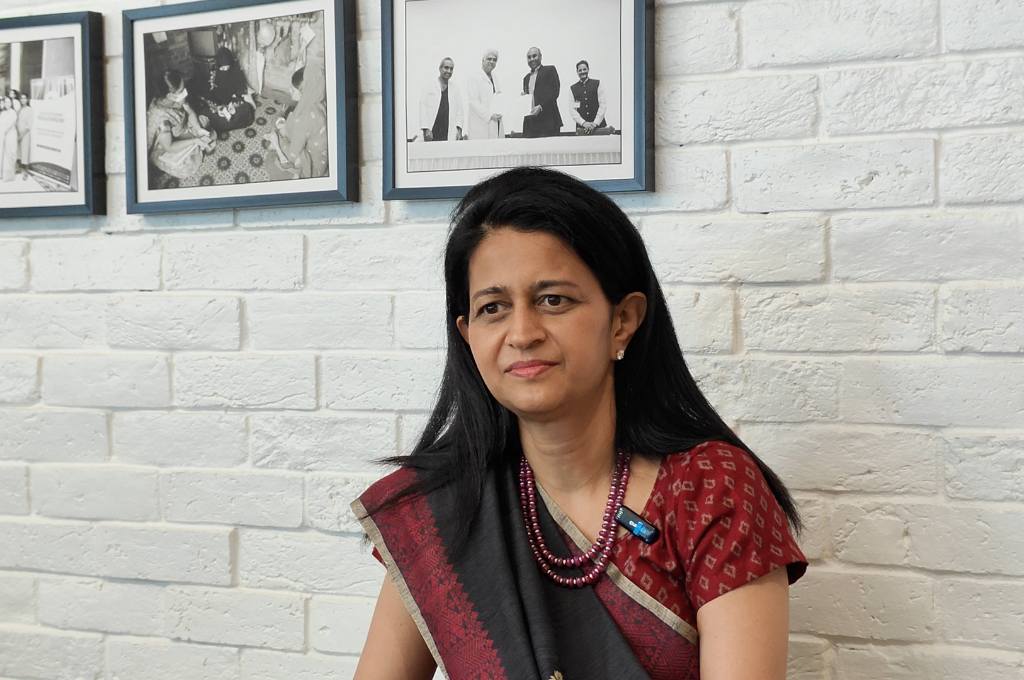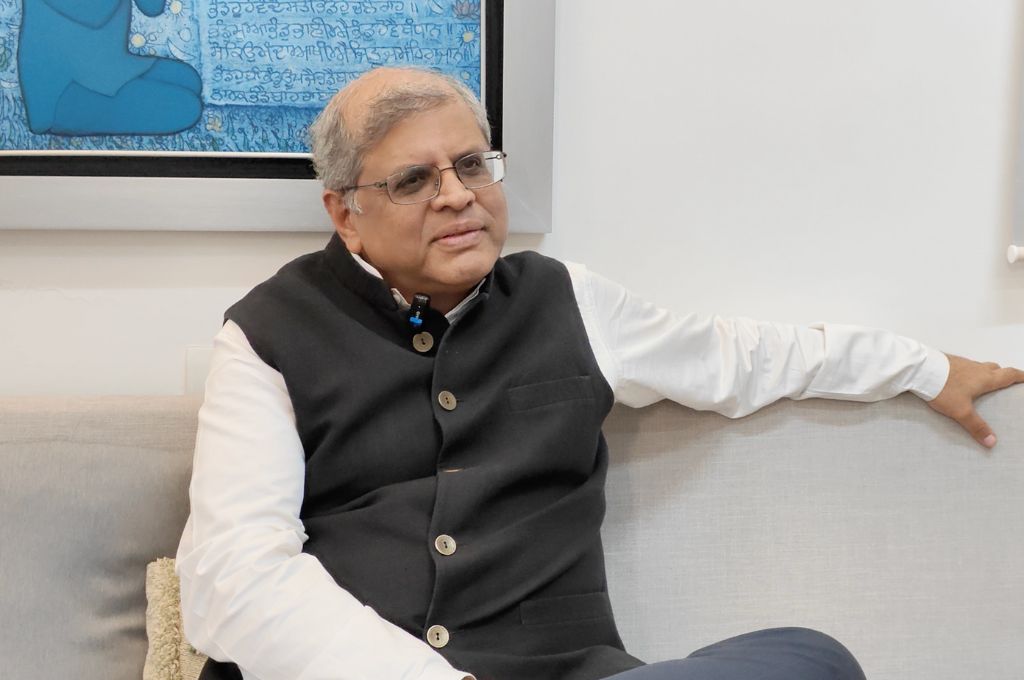As India works through the health, financial, and socio-economic implications of COVID-19, it is evident that the country needs to dramatically increase and improve the quantity and quality of spending on healthcare and education. This increased investment will be critical to maintaining its development trajectory and delivering inclusive, poverty-alleviating growth.
In the immediate term, emergency government spending on social welfare and traditional development aid are crucial to minimising the impact of COVID-19. But what about the longer-term? How can the structural weaknesses in the healthcare and education system—made stark by the pandemic—be changed in the long run?
Blended finance offers one possible pathway to this.
What is blended finance?
Blended finance is the use of catalytic capital from public and/or philanthropic sources to increase private sector investment in developing countries towards sustainable development. Simply put, catalytic capital accepts a reduced rate of return (ie higher risk) to generate a positive impact. In doing so, it makes third-party investments (that would otherwise not have been possible), possible.
Blended finance addresses the two main barriers that private investors face when considering investments in developing countries: a) high perceived and real risk and, b) poor returns for the risk taken compared to other investments. The presence of public and/or philanthropic capital within a transaction improves its risk-return ratio, making these investments more attractive for commercial investors.
Over the past few years, India has been amongst the most targeted countries as far as blended finance transactions are concerned. At Convergence, where I work, we maintain a database of historical blended finance deals. According to this database, since 2010 approximately 13 percent of all transactions have targeted India. In keeping with global trends, these transactions have primarily targeted the energy, financial services, and agriculture sectors.

Improving healthcare in India with blended finance
The setback of COVID-19 for Sustainable Development Goal (SDG) 3 (Good Health and Well-Being) has been obvious. India was woefully unprepared due to persisting challenges such as a relatively weak health system, lack of quality infrastructure, and substandard service delivery.
A good example of a blended finance transaction that is seeking to address these systemic issues is the Utkrisht Development Impact Bond (Utkrisht DIB). This was the first of its kind in the healthcare sector globally; its development was supported by Convergence’s Design Funding Programme.
The Utkrisht DIB seeks to reduce maternal and newborn deaths by using a pay-for-success model where a private investor fronts the cost of an intervention. In this case, the UBS Optimus Foundation provides initial working capital to the service providers Population Services International and Hindustan Latex Family Planning Promotion Trust. This, in turn, enables the two organisations to work with private healthcare facilities in Rajasthan to improve the standard of quality and care. Following this, the results of the intervention are measured by clear, predetermined metrics (ie. reduction in maternal and newborn deaths). Finally, if the intervention achieves pre-agreed outcomes, an outcome funder—in this case USAID and MSD for Mothers—repays the investor and provides a return on the investment. If outcomes are not achieved, the investor generally stands to lose not only the potential returns but also the principal. From the outcome funder’s perspective, money is disbursed only against documented results.
An interesting aspect of this transaction involves the role of the Government of Rajasthan, which participates in the oversight of the impact bond. If the programme is successful, the Rajasthan government will likely become the outcome funder for the next phase of interventions. Assuming a consistent improvement in the quality of care provided by private healthcare facilities, the programme will likely save an estimated 10,400 lives over five years.
The Utkrisht DIB transaction template is currently being replicated in other areas of the healthcare sector in India.
The Utkrisht DIB transaction template is currently being replicated in other areas of the healthcare sector in India. The Pimpri-Chinchwad Municipal Cooperation in Maharashtra and the United Nations Development Programme (UNDP) have recently signed an MoU for a blended finance transaction. Through it, private funds will enable the municipality to upgrade its healthcare infrastructure, build its staff’s capacity, and establish protocols that can improve the quality of healthcare.
Narrowing the access to education gap
The COVID-19 pandemic has also exposed the inadequacies and inequities in India’s education system and impacted the achievement of SDG 4 related to Quality Education. There is a misalignment between needs and resources available, such as having access to broadband and computers for online education. Such gaps provide an opportunity for blended finance transactions to fund the extraordinary efforts required to plug them.
Following the model of the results-based finance mechanism described above, the British Asian Trust (BAT), the UBS Optimus Foundation, and the Michael & Susan Dell Foundation are currently supporting a blended finance transaction in India—the Quality Education India (QEI) Development Impact Bond. The QEI brings in additional funds to improve the quality of education delivery through teacher and headteacher training, whole-school development, and educational technology. In doing this, it seeks to improve the quality of literacy and numeracy learning for more than 200,000 primary school children from marginalised communities across four locations (Delhi, Gujarat, Maharashtra, and Uttar Pradesh).
Additionally, in order to address a shortage of skilled healthcare workers and increasing unemployment, the British Asian Trust is also working with the National Skills Development Corporation (NSDC) to launch a similar mechanism to finance innovative skills training models to increase employment for Indian youth during post-COVID-19 recovery.
India has suffered a significant setback in achieving its SDGs, but now there is an opportunity to learn from the weaknesses exposed by the pandemic.
Another example of how blended finance can be used to support the education sector (especially in the context of COVID-19) is Varthana, a non-banking finance company (NBFC) that supports private schools for low- and middle-income students. It provides loans to students to attend the schools and loans to private schools so they can offer a higher quality of education. As there is an enhanced perception of risk with respect to their underlying borrowers (the students and private schools), the organisation secured a USD 5 million guarantee from the United States Development Finance Corporation (US-DFC), which helped them mobilise 10 times more capital, and scale their intervention.
Even prior to the pandemic, the blended finance market within India was growing, with increasing recognition that collaboration between public, private, and philanthropic capital was critical to unlocking the additional finance required to achieve the SDGs. The crisis precipitated by COVID-19 has put this into even sharper relief. India has suffered a significant setback in achieving its SDGs, but now there is an opportunity to learn from the weaknesses exposed by the pandemic. Though not a silver bullet, blended finance offers India a unique framework for collaboration. It is one way to raise the additional private capital needed for development and to deploy it as productively as possible so that we can build back better.
An earlier version of this article stated that the UBS Optimus Foundation uses client funds for the Utkrisht DIB. This was amended on August 11th, 2021. Additionally, the UBS Optimus Foundation and the Michael & Susan Dell Foundation were added as supporters of the QEI.
—
Know more
- Read this primer on blended finance.
- Watch this video discussing why and how blended finance can help India meet its Sustainable Development Goals.





